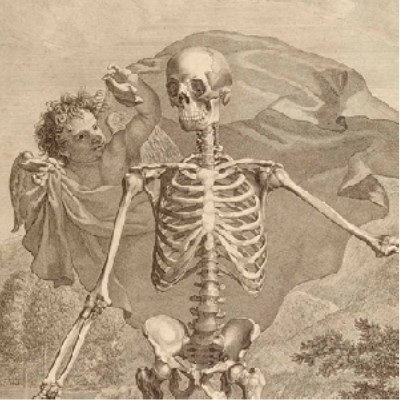Dream Anatomy
This site, developed as part of an exhibit, remains a valuable online source for the study of the history of anatomy. The basic premise is that human anatomy was a mysterious and imprecise subject until the advent of the printing press in the 15th century. Drawing on one of the most extensive collections of early printed books on the history of medicine, these 80 illustrations show how the knowledge of the interior of the human body gradually moved away from the “dream” status, in which it was depicted by many medieval physicians to the modern scientific human anatomy in medical texts today. The main focus is on premodern knowledge of medicine.
Starting with the first modern book of anatomy, Vesalius’s De Humani Corporis Fabrica (On the Form of the Human Body) published in 1543, the site shows how the knowledge of human anatomy systemically transformed itself through the use of print technology. One of the most interesting aspects of the project, in fact, is how the technology of printing—from early woodcuts and etchings to copperplate printing, to photography, to digital imaging—was a vital part of the revolutionary discovery of how the human body works. The site shows clearly that advances in anatomical knowledge depended on, and were sometimes tied to, advances in the technology of image reproduction.
These rich images make this site useful as a historical source. You can click on an image and instantly get not only an enlarged and higher resolution version of the image, but also publication details on where the image was first published, the anatomist, and the illustrator. Click on the same image again and an even higher resolution image appears. A separate link allows you to see all of the images at once. And since many of these are hand-colored engravings in rare medical books, this collection offers a wealth of resources for the study of the history of medicine.
An overview offers a summary of the history of anatomy, including enough nonspecialist explanation for those new to the subject. A “Learning Station” is designed for those in middle school, some of whom may find the main site too difficult. For advanced high school and university students, however, this is a prime site for learning about the history of human anatomy, as well as a treasure trove of images from early printed books by the most famous names in the history of medicine.
The site is extremely easy to use. And there is plenty of information available for those who wish to learn more about the subject. In short, this is popular history at its finest: a difficult and nuanced subject made both interesting and relevant in a digital format. And many of the images are quite remarkable, with perhaps the representations of the effects of hanging and crucifixion on the human body being among the most striking. Given that for a long time physicians only had the cadavers of executed criminals to study, perhaps this is not surprising. But there is much on this site that will surprise you.
